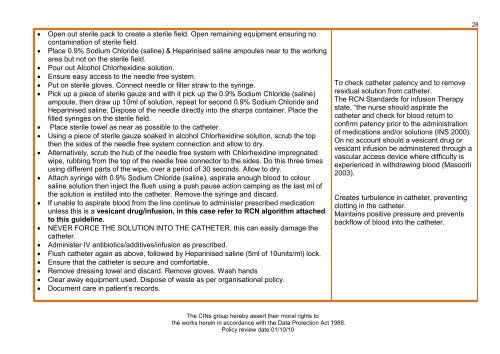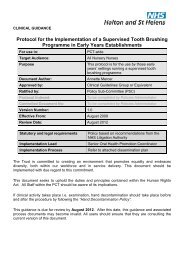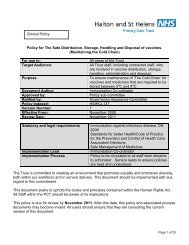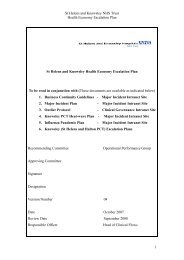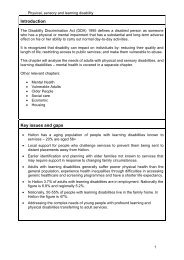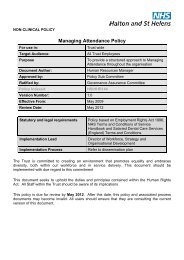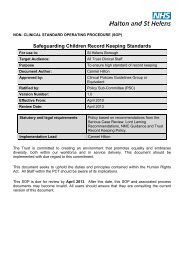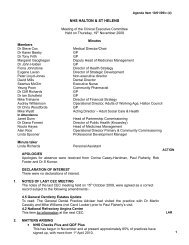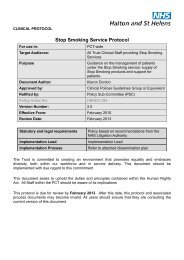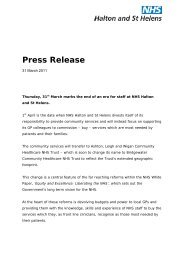Collaborative Intravenous Nursing Service (CINS) Guidelines
Collaborative Intravenous Nursing Service (CINS) Guidelines
Collaborative Intravenous Nursing Service (CINS) Guidelines
- No tags were found...
You also want an ePaper? Increase the reach of your titles
YUMPU automatically turns print PDFs into web optimized ePapers that Google loves.
• Open out sterile pack to create a sterile field. Open remaining equipment ensuring nocontamination of sterile field.• Place 0.9% Sodium Chloride (saline) & Heparinised saline ampoules near to the workingarea but not on the sterile field.• Pour out Alcohol Chlorhexidine solution.• Ensure easy access to the needle free system.• Put on sterile gloves. Connect needle or filter straw to the syringe.• Pick up a piece of sterile gauze and with it pick up the 0.9% Sodium Chloride (saline)ampoule, then draw up 10ml of solution, repeat for second 0.9% Sodium Chloride andHeparinised saline. Dispose of the needle directly into the sharps container. Place thefilled syringes on the sterile field.• Place sterile towel as near as possible to the catheter.• Using a piece of sterile gauze soaked in alcohol Chlorhexidine solution, scrub the topthen the sides of the needle free system connection and allow to dry.• Alternatively, scrub the hub of the needle free system with Chlorhexidine impregnatedwipe, rubbing from the top of the needle free connector to the sides. Do this three timesusing different parts of the wipe, over a period of 30 seconds. Allow to dry.• Attach syringe with 0.9% Sodium Chloride (saline), aspirate enough blood to coloursaline solution then inject the flush using a push pause action camping as the last ml ofthe solution is instilled into the catheter. Remove the syringe and discard.• If unable to aspirate blood from the line continue to administer prescribed medicationunless this is a vesicant drug/infusion, in this case refer to RCN algorithm attachedto this guideline.• NEVER FORCE THE SOLUTION INTO THE CATHETER, this can easily damage thecatheter.• Administer IV antibiotics/additives/infusion as prescribed.• Flush catheter again as above, followed by Heparinised saline (5ml of 10units/ml) lock.• Ensure that the catheter is secure and comfortable.• Remove dressing towel and discard. Remove gloves. Wash hands• Clear away equipment used. Dispose of waste as per organisational policy.• Document care in patient’s records.To check catheter patency and to removeresidual solution from catheter.The RCN Standards for infusion Therapystate, “the nurse should aspirate thecatheter and check for blood return toconfirm patency prior to the administrationof medications and/or solutions (INS 2000).On no account should a vesicant drug orvesicant infusion be administered through avascular access device where difficulty isexperienced in withdrawing blood (Masoorli2003).Creates turbulence in catheter, preventingclotting in the catheter.Maintains positive pressure and preventsbackflow of blood into the catheter.28The CINs group hereby assert their moral rights tothe works herein in accordance with the Data Protection Act 1988.Policy review date 01/10/10


